Leora J. Goodin
I'm a blogger dedicated to sharing insights on lifestyle and wellness. Through personal stories and practical tips, I aim to inspire and empower my readers to lead healthier, more fulfilling lives.
Students and teachers save a massive 71% on Creative Cloud All Apps
Black Friday and Cyber Monday 2023 Deals for Motion Designers, grab it now!

Hungry for bakery-quality chocolate chip cookies? Here are 7 secrets that will transform your baking—discover the key to perfect cookies every time.

To bake perfect bakery chocolate chip cookies, use high-quality unsalted butter and balance brown and white sugars for chewiness and crisp edges. Make sure your eggs are room temperature and mix them in one at a time. Measure flour accurately to avoid dense dough. Chill your dough to enhance flavor and prevent spreading. Bake at 350°F until golden but slightly underbaked for gooey centers. Store cookies properly to keep them fresh. There’s plenty more to master for ultimate cookie success.
When you choose the right butter, you’ll notice a big difference in both flavor and texture of your chocolate chip cookies. Using European style butter with higher butterfat content gives your bakery cookie a richer, more pronounced taste compared to standard butter.
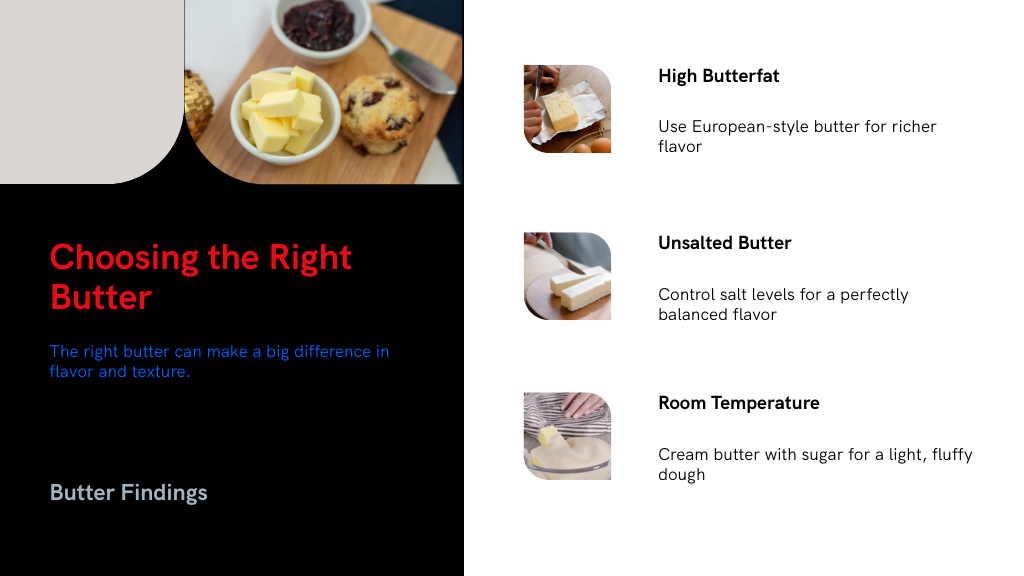
Opting for unsalted butter lets you control the salt level, ensuring your bakery chocolate chip cookies have a perfectly balanced flavor.
Make sure your butter is cool but at room temperature—around 67°F—so it creams well with sugar, creating a light, fluffy dough that bakes into tender cookies.
For an even deeper flavor, try cultured butter, which adds subtle complexity through fermentation. High-quality butter can also bring out a delightful butterscotch note, elevating your cookies to bakery-worthy perfection.
You’ll want to strike the right balance between brown and white sugar to get cookies that are both chewy and crisp. Brown sugar adds moisture and chewiness, while white sugar helps create those crisp edges. Adjusting their ratios lets you control texture and spread, so experiment to find what works best for you.
Although it might seem simple, mastering the right balance between brown and white sugar is key to baking chocolate chip cookies that are both chewy and crisp.
White sugar gives your cookies that satisfying crunch, while brown sugar’s molasses keeps them moist and chewy. Aim for about 75% brown sugar and 25% white sugar to get the perfect texture and a rich butterscotch flavor.
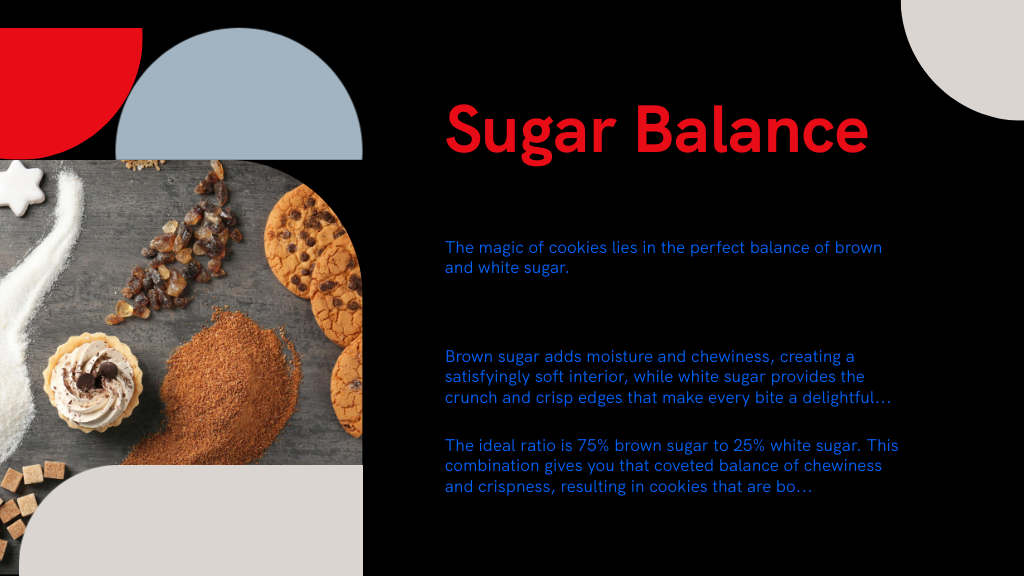
Using only white sugar makes cookies hard and crunchy, whereas all brown sugar results in overly soft batches. Keep in mind, cutting sugar too much can make your cookies cake-like, so maintain that balance.
Don’t hesitate to try dark brown sugar—it deepens flavor and caramelization, enhancing your cookie’s complexity without sacrificing texture. This balance is the secret to bakery-quality cookies at home.
Since sugar types directly affect moisture and structure, mastering their ratios is essential for achieving the perfect cookie texture. If you use more brown sugar, thanks to the molasses, your cookies will turn out chewier and softer. On the other hand, white sugar promotes crispiness, so relying solely on it tends to make your cookies hard.
A great starting point is about 75% brown sugar and 25% white sugar, which balances chewiness with a slight crisp edge and rich flavor. Feel free to experiment with these ratios to tailor your cookies—more brown sugar for tender, chewy treats or more white sugar for crunchier results.
Just remember, reducing total sugar can shift your cookies toward a cakier texture, moving away from that classic chewy-crisp combo you’re aiming for.
Three simple steps can make all the difference when preparing eggs for your chocolate chip cookies. First, always use eggs at room temperature to avoid curdling and guarantee even mixing; cold eggs can cause an uneven dough consistency. If your eggs are cold, quickly warm them by submerging in warm water for about 10 minutes.
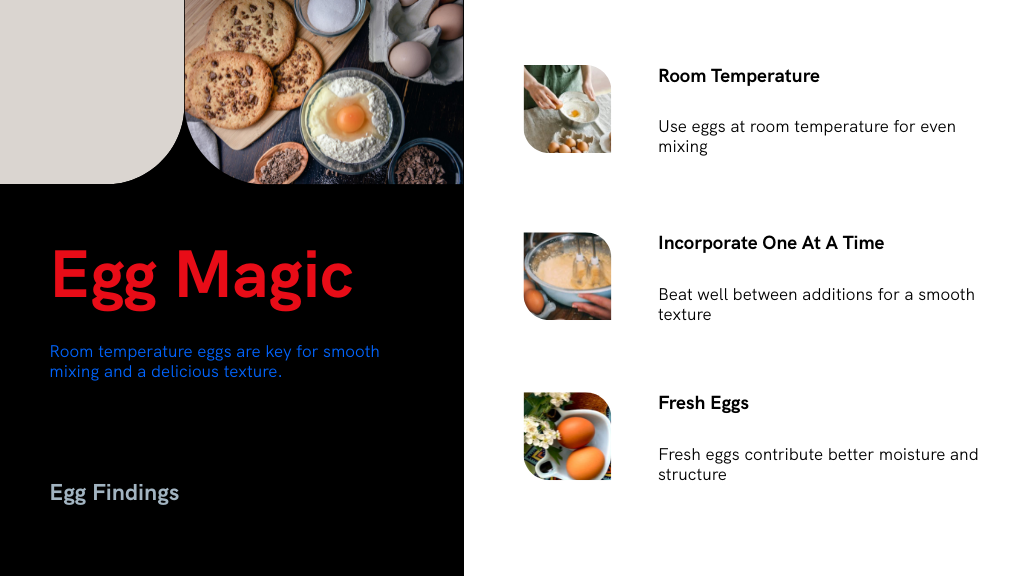
Second, incorporate eggs one at a time, beating well between additions. This improves emulsification and creates a smooth texture. Finally, make certain your eggs are fresh and within their expiration date, as fresh eggs contribute better moisture and structure.
Properly prepared and incorporated eggs enhance the chewiness and overall quality of your cookies, giving you that perfect bakery-style bite every time.
Getting your eggs just right sets a solid foundation, but flour measurement plays an equally important role in how your cookie dough turns out. One cup of all-purpose flour should weigh about 4.5 oz. (125 grams) for perfect texture.
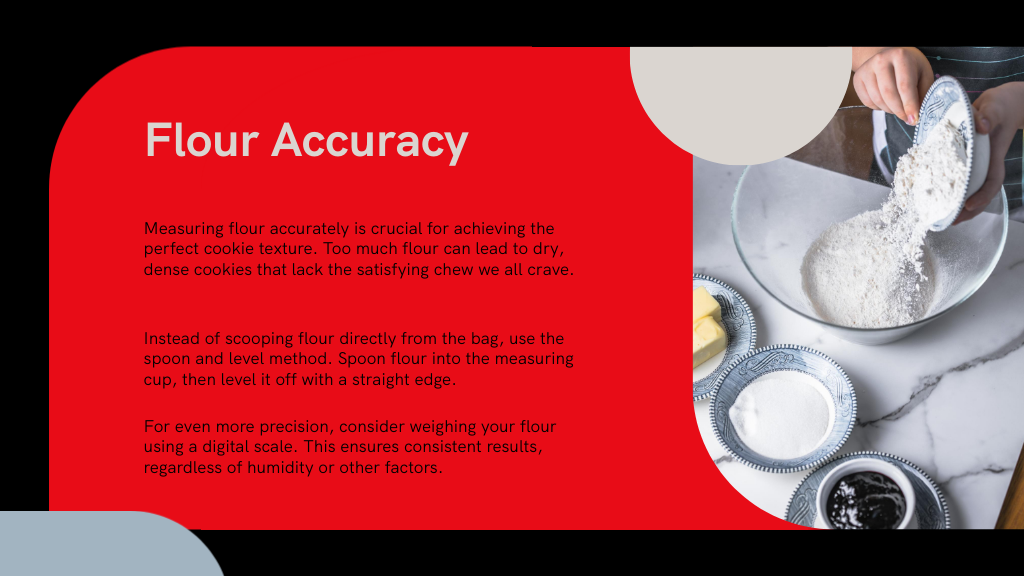
Using the spoon and level method prevents you from packing flour into the cup, which can lead to dry, dense cookies. For even greater accuracy, weigh your flour with a digital scale—this guarantees consistent results, no matter the batch or external conditions.
You’ll want to set your oven to 350°F to get that perfect balance of crispy edges and gooey centers. Keep an eye on your baking time—usually 11 to 13 minutes—to catch the ideal golden color without overbaking. If your cookies spread too much, try chilling the dough or lowering the temperature slightly for more even baking.
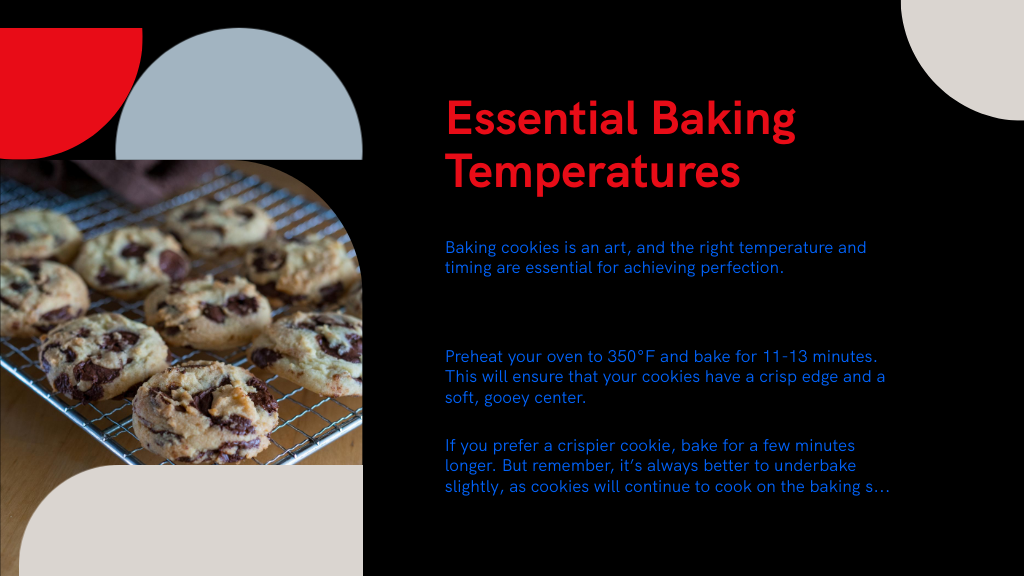
Although it might seem straightforward, setting your oven to the right temperature is key to baking perfect chocolate chip cookies. Preheat your oven to 350°F for the ideal balance of browning and cooking time.
To guarantee accuracy, use an oven thermometer since even slight temperature variations can affect texture and doneness. Always bake on the center rack to promote even heat distribution and avoid hot spots that cause uneven baking.
If you’re making thicker cookies, lower the temperature to 325°F and extend baking time so they cook thoroughly without over-browning the edges. Keep an eye on your cookies and remove them when the edges turn golden but the centers are still slightly soft for that perfect gooey texture.
Once your oven is set to the right temperature, adjusting the baking time becomes just as important to achieve perfect cookies. Typically, you’ll bake at 350°F for 11-13 minutes, but if you tweak the temperature to 375°F or 325°F, keep a close watch as the time will vary.
Smaller cookies need less—around 8-10 minutes—so check them often to avoid over-baking. Using an oven thermometer helps guarantee your oven is accurate; otherwise, cookies might bake unevenly.
If your cookies spread too much, try chilling the dough or adding a bit more flour. Remember to pull them out when they’re just slightly underbaked with a soft center—they’ll firm up on the baking sheet, giving you that perfect chewy texture.
When you chill your cookie dough for at least four hours, or better yet, overnight, the flour fully hydrates and the flavors deepen. This simple step transforms your cookies in remarkable ways.
The fats solidify, so the dough spreads less, giving you thick, chewy cookies. Plus, chilling promotes better caramelization, which means richer flavors and a beautiful golden-brown color.
When baking chilled dough, you often get that perfect contrast: gooey centers with crisp edges.
Here’s what to expect when you chill your dough:
Give your dough time to rest, and you’ll taste the difference!
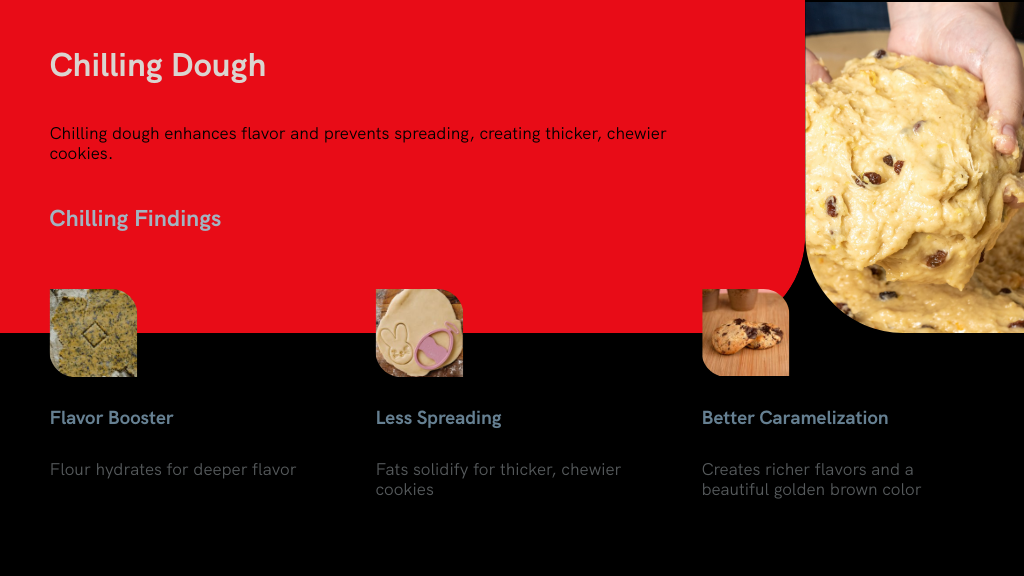
Keeping your chocolate chip cookies fresh and delicious is easier than you might think. Store baked cookies in an airtight container at room temperature for up to five days to keep them soft and prevent drying out. To maintain that soft texture, toss in a slice of bread or a few apple wedges—they help retain moisture naturally.
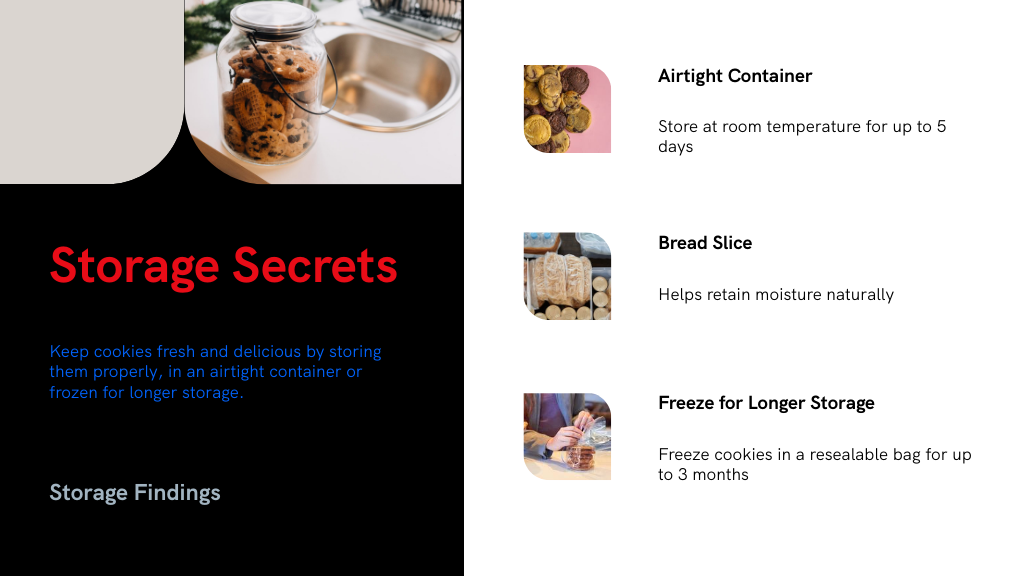
For longer storage, freeze your cookies in a resealable bag for up to three months. When ready to enjoy, thaw at room temperature for 5–10 minutes.
You can also freeze pre-scooped dough wrapped in plastic and sealed in a freezer bag, making baking later a breeze. Just be sure your cookies are completely cooled before storing to avoid condensation, which can ruin their texture by making them soggy.
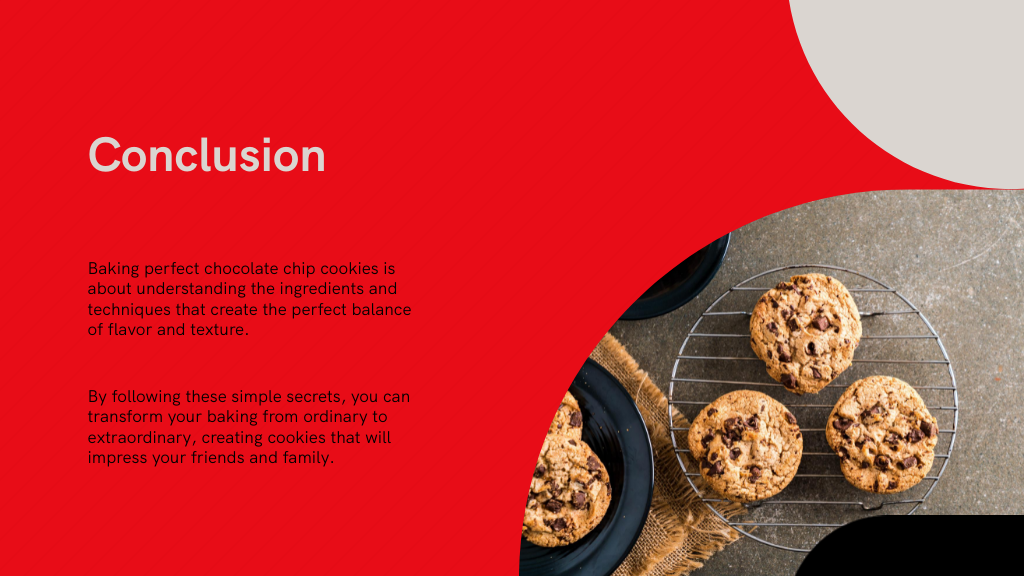
Now that you know these secrets, you might worry the process is too complicated—but it’s really not! Just choosing the right butter and mastering sugar ratios can transform your cookies from good to unforgettable. With a little patience, like chilling the dough and measuring flour accurately, you’ll get perfect texture and flavor every time. Follow these tips, and you’ll bake bakery-quality chocolate chip cookies that everyone will love—effortlessly.
Your email address will not be published. Required fields are marked *